
If you own a business that relies on a slick and effective supply chain, you’ll know full well how damaging supply chain disruption can be. Supply chains are often fragile ecosystems in which one broken link can ripple throughout the entire chain. We can all hope that our supply chains will be resilient and reliable, but that’s not always the case.
Supply chain disruption has long been understood by business owners, manufacturers, and suppliers, but it has recently come under a public spotlight. The COVID-19 pandemic created changes and disruption for businesses across the world. Now that many parts of the world are opening up again, demand is increasing and supply chain disruption has become a serious problem for many businesses.
How can businesses mitigate the effects of supply chain disruption and ensure they are prepared for future disruption? This article will explain exactly what supply chain disruption is, what causes it, and offer five effective strategies for managing supply chain disruption.
What Is Supply Chain Disruption and What Causes It?
A supply chain is a system of people, organizations, and actions that moves products from suppliers to customers, and eventually to a final customer. A typical supply chain flow might start with raw materials, move through the supplier, the manufacturer, the distributor, and the retailer, and eventually reach the customer. Different products, however, have different supply chains. An iPhone has a much more complex supply chain than an apple.
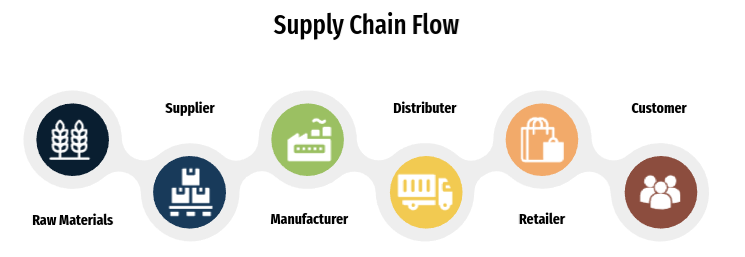
Image Created by Author
Supply chain disruption takes place when any of the people, processes, or organizations in the supply chain flow are disrupted. For example, if truck driver shortages disrupt the product’s distributor, any person, process, or organization further down the supply chain will also be disrupted.
What causes supply chain disruption? Supply chain risks can be split into two main categories: external and internal. Within these categories, there are a variety of risks that businesses should consider when assessing their supply chains:
External risks are supply chain risks that come from outside of your organization:
- Demand risks occur when the demand for a product has been miscalculated either because demand is unpredictable or because suppliers have not accurately tracked year-on-year demand to correctly estimate demand.
- Supply risks happen when products or raw materials have not been delivered on time or not delivered at all, meaning that products cannot be manufactured or distributed effectively.
- Business risks come about when changes to businesses and organizations have disrupted supply chains, such as the sale of your supplier to another company or a supplier going bankrupt.
- Environmental risks are when supply chains are disrupted by governmental, political, socio-economic, or environmental factors. These could include an economic or political crisis in a country that provides products in your supply chain, a natural disaster or extreme weather, or a pandemic.
Internal risks are supply chain issues that are within your control:
- Manufacturing risks happen when something goes wrong within your manufacturing process, disrupting your workflow and stopping you from selling and delivering products to customers.
- Shipping risks happen when mistakes are made or disruptions occur in your shipping process. From incorrectly calculating dimensional weight to power outages, a range of issues can happen within your own shipping process that will prevent you from getting products or supplies to your customers.
- Planning and control risks occur when you have not corrected forecasts or assessed your production, management, and demand.
- Business risks refer to when changes within your business, such as changes to personnel or any part of your process, have affected your supplies.
- Contingency risks occur when your business hasn’t effectively prepared for supply chain disruption.
Supply chain disruption is a normal part of business, but since the COVID-19 pandemic hit, disruption is becoming more common. Supply chain disruption is expected to cost U.S. organizations a total of $228 million in 2021. Increased demand following the vaccine rollout and the relaxing of restrictions is often cited as a leading cause of these disruptions, but staff shortages and fluctuating prices at various points in supply chains are other causes of the current disruption.
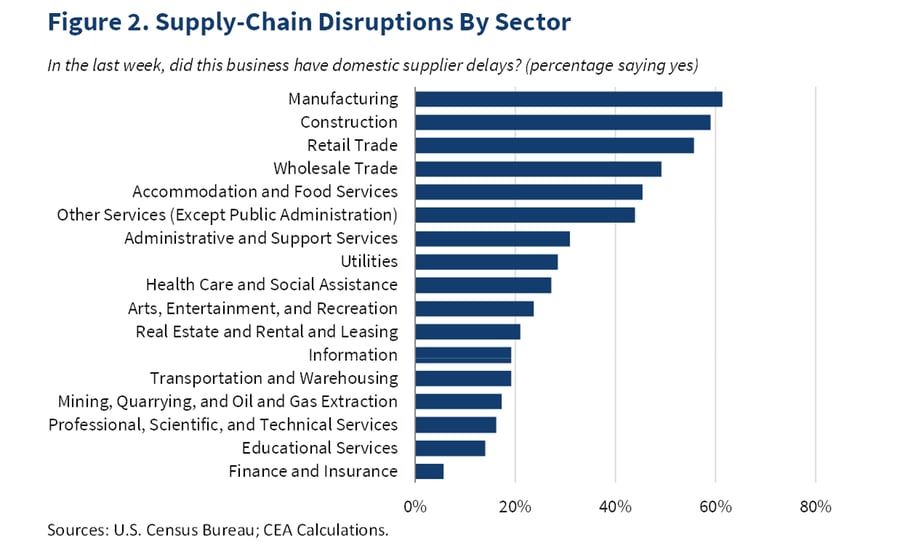
Which sectors do supply chain disruption hit the worst? A 2021 survey by the U.S. Census Bureau suggests that manufacturing, construction, retail and wholesale trade, and food services are experiencing the most impact due to supply chain disruption.
Five Supply Chain Disruption Management Strategies
In 2020, businesses put many things into place and developed a whole new range of strategies in order to manage the effects of the pandemic. From learning how to manage remote teams to shifting to eCommerce over in-store shopping, many business owners had to find new ways to optimize their workflow, or even adjust their business models dramatically. Now that supply chain disruption becomes more common, it’s time for businesses to adopt supply chain disruption management strategies.
Supply chain disruption management is an increasingly important set of processes and strategies that businesses are putting in place to mitigate the effects of supply chain disruption. Moving forward, businesses need more resilient and agile supply chains that can handle interference, but what can your business do to manage and respond to supply chain disruption?
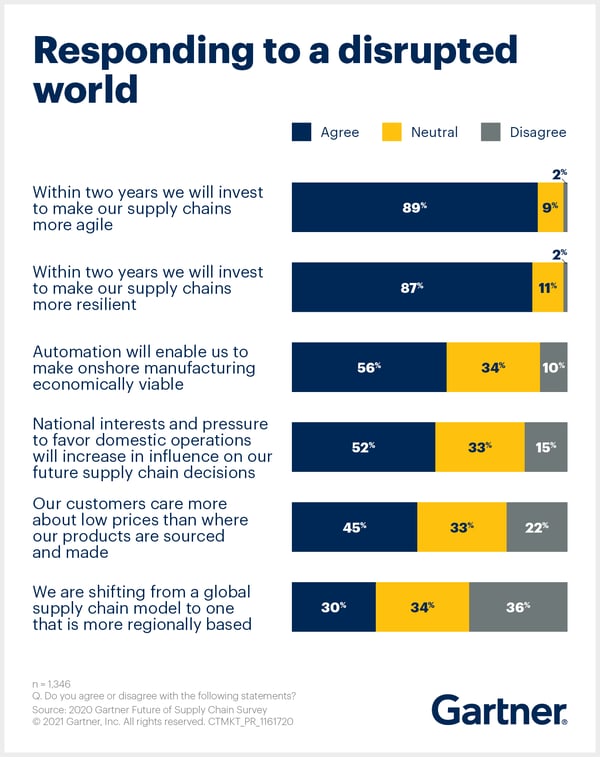
Supply chain disruption management is about preparing for disruption and ensuring you can still supply and sell products. The five strategies we’ll cover below are:
- Creating a contingency plan for supply chain emergencies
- Auditing your supply chain’s vulnerability
- Identifying backup suppliers and diversify your supply base
- Building up your inventory
- Improving the transparency of the supply chain
Each of these strategies should be a part of your business’s risk management plan and should be continually assessed in order to spot gaps in your risk management and ensure you’re fully prepared for the unpredictable but potentially damaging effects of supply chain disruption.
1. Create a Contingency Plan for Supply Chain Emergencies
Forbes has suggested that there is "no end in sight" for the current supply chain disruption. Businesses must accept that disruptions will continue for some time.
Even without the current COVID-driven disruptions, it is still important that businesses have contingency plans in place for supply chain disruptions and emergencies. The first step in creating a contingency plan is to identify every stage of your supply chain and ask yourself what you would do if that stage was disrupted.
Your contingency plan might include how and when you contact customers about supply chain disruption and your lowered capacity, how you’ll estimate available inventory, and who you can contact to get backup inventory. You should also estimate how much disruption to each point on your supply chain will cost so that you can be financially prepared for each disruption.
One popular supply chain risk management strategy used by businesses when creating a contingency plan is the PPRR risk management model. The “PPRR” stands for:
- Prevention: taking measures to reduce the impact of supply chain disruption before it happens.
- Preparedness: creating a contingency plan should a supply chain emergency take place.
- Response: implementing the contingency plan when disruptions occur.
- Recovery: resuming normal operations as quickly as possible.
When you create your plan, consider dividing your strategies according to these four concepts so that you can easily manage your contingency plan and continually audit it and measure its success.
2. Audit Your Supply Chain’s Vulnerability
Part of preparing for supply chain disruption and creating a contingency plan involves auditing your supply chain and pinpointing where the vulnerabilities lie. The first thing to consider is how vital each point of your supply chain is.
For example, say you run an online jewelry business and you rely on a sole supplier for a specific component of your jewelry. That point on your supply chain is potentially vulnerable if you have no backups.
When auditing your supply chain’s vulnerability, you should also consider what points in your supply chain are “high risk”. You might consider using a ranking method like this one to determine which suppliers are high risk and how vital they are to your business.
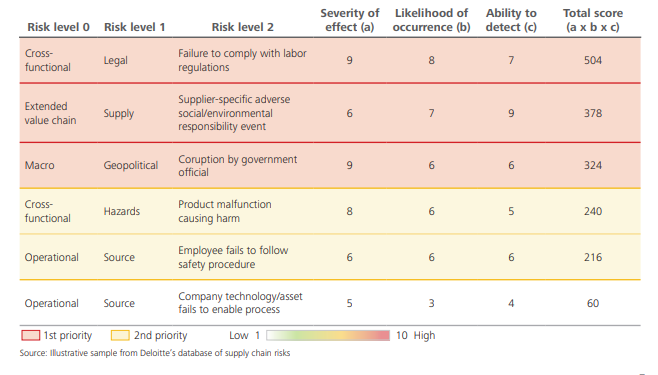
Research your suppliers and find out if they have experienced supply chain disruption recently or could be seen as “high risk” because of their financial history or location. Pin down what could cause supply chain disruption, how likely it is to happen, how much it will affect your business, and how easy it will be for you to detect these risks.
Separate each point in the supply chain into “low risk,” “medium risk,” and “high risk” so that you know which points you should focus your risk management on and potentially find backup suppliers for.
3. Identify Backup Suppliers and Diversify Your Supply Base
Another essential part of preparing for supply chain disruption is to have backup suppliers and a diverse supply base. Compile a list of suppliers and order fulfillment companies for each point in your supply chain and for the different products or services you require. That way, you will have easy access to a variety of suppliers should something go wrong with your main supplier.
Diversifying your supply base is the process of ensuring that should issues arise in a particular location, you have the right people in the right place to fix it. Finding suppliers that have supplies or manufacturers in multiple locations and that themselves have a diverse supply base will mitigate the effects of supply chain disruptions.
For example, if U.S. supply chains are disrupted due to labor shortages, finding a supplier that also has factories abroad means you won’t be as badly affected by the labor crisis. If you aren’t sure how diverse your supply base is, pick up your enterprise telephone and contact your suppliers to find out what their contingency plans are and how diverse their own supply chains really are.
4. Build Up Your Inventory
Having extra quantities of goods, be they finished products, parts and components, or even raw materials, will help your business survive future supply chain disruptions. Plan out what goods you need to stockpile and how much you need. This is where your contingency plan should come in handy as you can map out what you’ll need should any point of the supply chain flow be disrupted.
Building up your inventory is an added expense that many small businesses may struggle with. The best time to increase your inventory is whenever your business expands or you launch a new product — that way you can stock up while you are buying more goods anyway.
You should also consider stocking up before times of the year when supply chain disruption is more likely, such as peak periods or periods when environmental factors, like hurricanes or flooding, could affect your suppliers.
5. Improve the Transparency of the Supply Chain
Supply chain transparency, or supply chain visibility, is difficult to achieve, but it’s an important part of supply chain disruption management. Transparency refers to how easy and accessible the processes and organizations in the supply chain are to view and assess. You may know your suppliers well, but how much do you know about their suppliers or their distributors? If the answer is nothing, your supply chain doesn’t have full visibility.
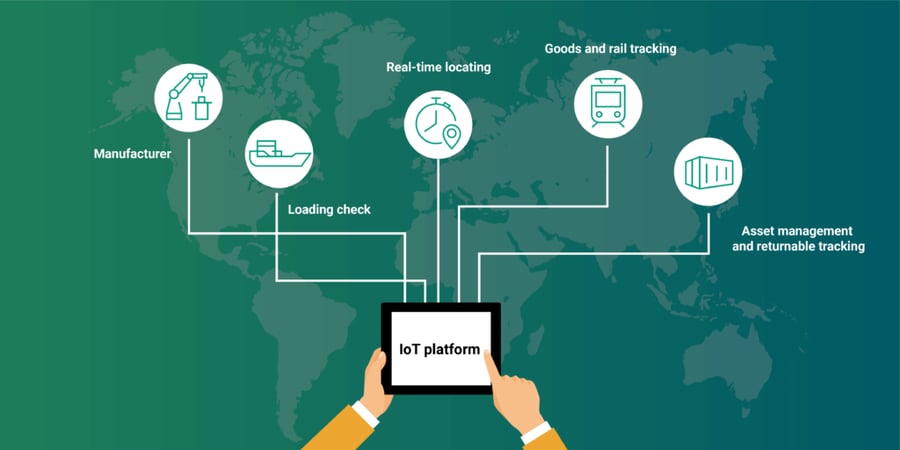
Find out as much as possible about the processes and risks attached to each point in your supply chain and map this out. There is also technology that is helping businesses gain more visibility in their supply chains.
This includes inventory management tools and software and shipping trackers. Some businesses are now investing in Internet of Things (IoT) tech and platforms, which is used to get precise, real-time data during the supply chain process such as traffic patterns, the temperature and moisture conditions of each stage of the chain, and real-time manufacturing, shipping, and inventory reports.
Conclusion
Disruptions to supply chains are often unforeseen, unpredictable, and outside of the control of the businesses they affect.
This doesn’t mean that every supply chain disruption has to spell disaster for your business. Businesses with robust supply chain disruption management strategies in place can prevent disruption, mitigate the effects of disruption, and effectively get back on their feet again after disruptions take place.





Leave a reply or comment below